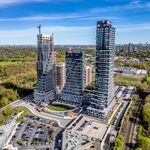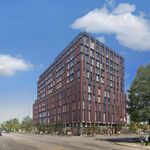D
Degnaw
Guest
What? Isn't VCC ON highway 7?

I would guess that any work started this year will be utility relocation.So they said they won't start tunnelling til the end of 2008, and it won't be complete til 2014.
Although what would happen if they both entered and exited the system in York Region? For example, Steeles W to Vaughan CC?all you need to do is to set up exit turnstiles at the York Region stations that require passengers to pay a fare as they leave the station. Don't expect a turnstile with a Metropass scanner.
Although what would happen if they both entered and exited the system in York Region? For example, Steeles W to Vaughan CC?
Too much vertical, not enough lateral, i.e. if the northern limit of Zone 1 is Eglinton, than you might as well bring the E-W limits further in than the ends of the B-D line...Once the TTC gets smart cards like the Oyster Card in London what is to stop them from bring back the different fare zones? Since I live downtown I'm not opposed to the idea and here is an artist conception.
80% of the TTC's ridership comes from suburban residents that, with the longest trips, will end up paying as much as they pay now. The TTC may lose revenue from about 20% of its riders, however I'm sure that enough new rides will be generated that overall revenue won't drop.chuck, that may cost the system too much depending if alot of trips are short ones. it would take away more $ from the TTC.
Also, Steeles West station would be exempt from the extra fare.
Too much vertical, not enough lateral, i.e. if the northern limit of Zone 1 is Eglinton, than you might as well bring the E-W limits further in than the ends of the B-D line...




